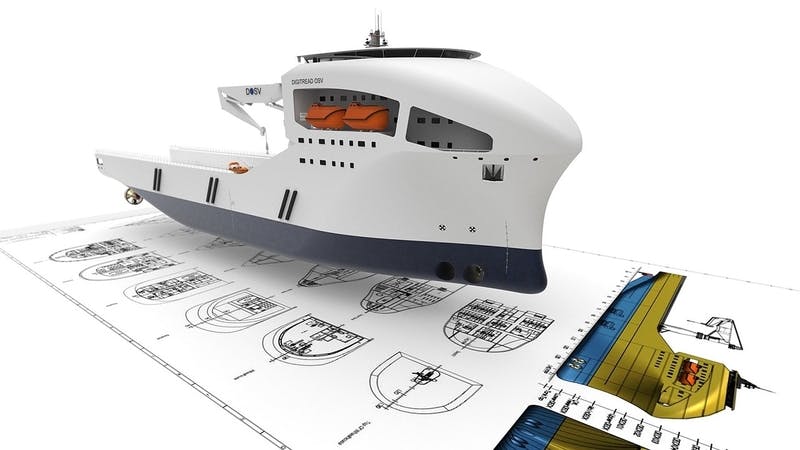This webinar highlights how digital tools, including process automation, simulation, and design space exploration, can change your approach on how to design a ship.
The current ship design process is complex and time-consuming. During the initial tender phase time is limited: proposing a hull design that minimizes capital expenditure (CAPEX) during the build, whilst meeting operational expenditure (OPEX) demands of the customer, as well as certification requirements, remains a challenging task.
Learn how a simulation-driven approach to marine design enables rapid development and testing of multiple hull designs so you can meet tender deadlines and have full confidence in vessel performance.
How rethinking your ship design process reduces costs and design times
Watch this webinar to learn:
- Why the ship design spiral is inefficient, and how to change this
- How to design a ship with a simulation-driven approach
- The benefits of connected marine simulation tools
- How to rapidly evaluate hundreds of hull designs and ensure performance targets are met
- Results from a case study for optimizing both OPEX and CAPEX for an Offshore Supply Vessel
Manage your design data and variants via a digital ship approach
Move from disconnected teams working in silos, to a connected approach. Using a master model, or digital ship, all data is connected throughout the ship design process. This master model contains CAD data (including general arrangement, structural design and marine systems). Any simulations start by importing the relevant data from the master model. Any alterations based on the simulations can be fed back to the master model. This digital ship contains all information relevant to the vessel at any stage of the design process. The model is freely available and accessible to all teams, removing lags in information between different departments.
Combine CFD simulation software and design exploration to evaluate multiple vessel designs
While CFD simulation software is growing in use in the marine industry, combining it with design exploration software takes your analysis to the next level. Naval architects can focus on design analysis rather than setting up marine simulations. Specify the requirements and restraints for your vessel, then let the software drive the process, simulating multiple designs, and assessing their hydrodynamic efficiency. You can efficiently find design concepts that meet or exceed your performance requirements and compare designs and trade-offs between different specifications.
Learn more about our marine simulation tools
Our simulation and test solutions enable you to examine almost every aspect of ship design and meet and exceed required design standards. Our portfolio of prediction and engineering tools combines CFD simulation software, system analysis software, and structural analysis software, along with engineering services teams, all aimed at helping you to achieve your design goals faster. These solutions can form part of a digital ship lifecycle management system, giving you end-to-end visibility on vessel performance.
Meet our experts to discuss how to design a ship using digital tools
Dejan Radosavljevic is the marine simulation expert for the Simulation and Test segment of Siemens Digital Software Industries. He works with marine customers worldwide, helping to apply simulation to their ship design and performance processes.
